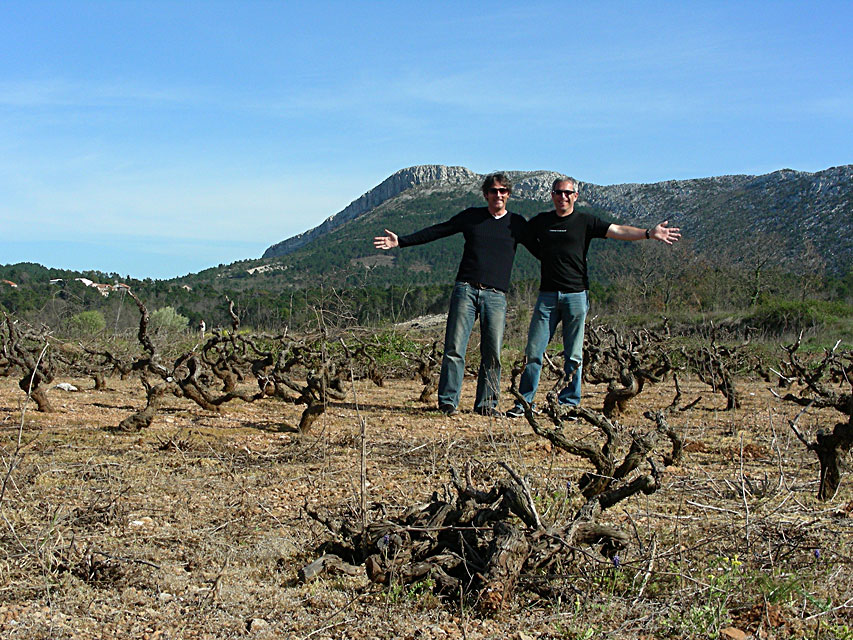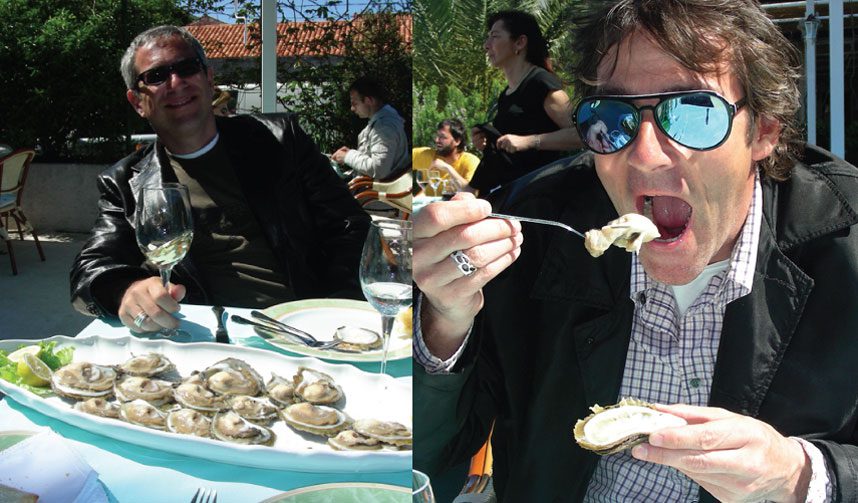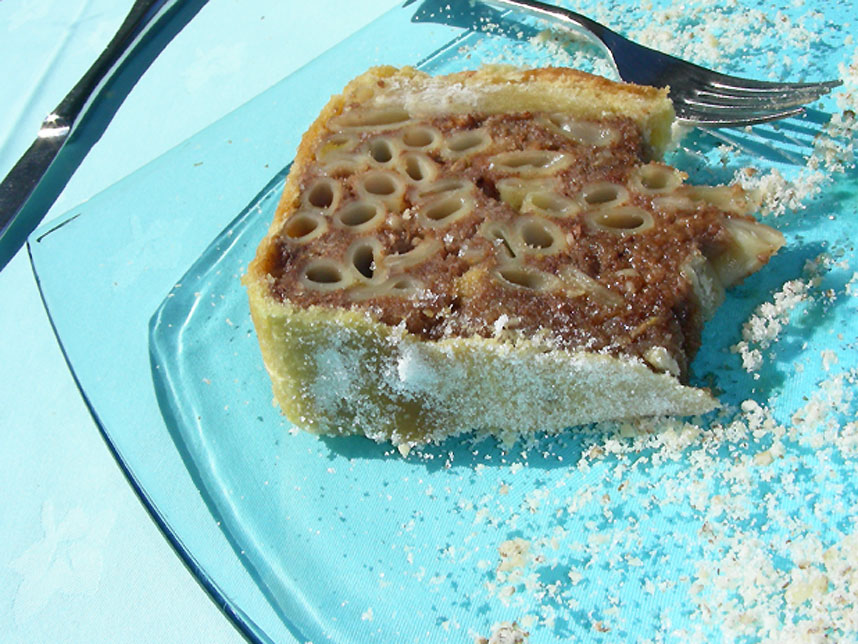
Does a Croatian Food and Wine Guide seem a bit of a random subject for this blog? Well, maybe it’s not so random. I’ll give you one guess why. Yep. I’m going to Croatia. I’ve been there before (in 2006) and I promised myself that I’d definitely, positively, absolutely go back.
But you know how those kinds of promises go. It’s a big world. It’s taken me quite some time to stay true to my word.
Ken and I (plus 4 other friends) have chartered a 27-meter sailboat to cruise around the Southern Dalmatian islands off the coast of Croatia. Which means we’ll be off-the-beaten-track discovering the villages, beaches, and everything else most tourists never get to see. It also means we’ll be eating in small family-owned tavernas (known as

Croatian Food and Wine
Croatia has a rich diversity of culinary choices. It’s situated at the crossroads between Eastern and Western Europe and is influenced by both regions. In the north of Croatia, Istrian cuisine has graceful Northern Italian roots, but as you move inland you’ll find more robust menus, with Hungarian, Viennese and Turkish influences. Along the coast, where we’ll be, Croatia is known to have some of the finest s
Our itinerary follows a path through Southern Dalmatia from Dubrovnik up to Split so I will be concentrating here on the Croatian food and wine of this area.
Food…


A lot has changed since I was last on the Dalmatian coast. As you may know, Game of Thrones has transformed the area into an incredibly popular destination. In the process, Dalmatia has garnered a well-deserved reputation for seafood. Adriatic specialties like squid, turbot, John Dory (called Saint Pierre in Croatia),
However, shellfish lovers must pay a visit to the villages of Ston and Mali Ston on the Pelješac Peninsula which has been renowned for its oysters since Roman times. In fact, some of these oyster beds have been in constant harvest since then, resulting in a uniquely meaty oyster unlike any I’ve had.
The seafood dishes I’m looking forward to this trip
Aside from the seafood you’ll also find simply prepared vegetables. Swiss chard is especially popular I’ve read, and every restaurant seems to have some version of
There’s plenty more to eat. Meals often start with a platter of paški sir (sheep’s cheese from the island of Pag) and thinly sliced pršut (cured ham). This platter might be accompanied by a strong spirit for sipping known as rakija. A term which covers all the local herb and/or fruit-derived liqueurs including plum brandy (šljivovica), pear brandy (
The food list goes on.
The island of Brač, (one of our stops) is known throughout the country for lamb. It’s usually roasted and is often served whole to large groups at special events. While on Brač I also hope to try

There’s dessert too. Rožata, inspired by the Spanish crema Catalana, is probably the most popular sweet on the Adriatic. Or if you’re looking for something elegant how about the Austrian-inspired paradižet – fluffy white clouds of meringue floating in a custardy sea? I particularly remember enjoying a rustic cake called Stonska torta at an outdoor cafe in Mali Ston in 2006. It’s an unusual combination of pasta, sugar, cinnamon, and walnuts bound together with beaten eggs then wrapped in pastry. Some say it’s too strange a combination of savory and sweet, but Ken and I ate every bite and marveled at its structure. GREG

… and Wine
As is often the case, Croatian wines perfectly complement Croatian cuisine. Seafood is abundant, fresh and irresistible, so you might suppose that Croatian wines are mostly of the white variety. Well, you’re right! I’d like to fill you in on four whites and a not-to-be-missed red that will surely be filling us up while we’re island hopping.
First a few words about the history of wine in Croatia. It’s a long one. Viticulture was well established when the Ancient Greeks settled Dalmatia over 2,500 years ago. Several of the original indigenous varietals are still widely produced and wildly popular. We’ll be visiting, Vis, Hvar and Korčula and sampling (maybe too mild a word) Vugava, Bogdanuša,
Vugava is similar in taste to Viognier, the delicious Rhône varietal. In fact, it might even be one of Viognier’s offspring from about 2,000 years back. This lush, savory white is best with savory dishes like fish in a cream sauce or chicken.
Bogdanuša, on the other hand, is green-yellow in color and more acidic. This refreshing 12% alcohol wine would (will) pair nicely with oysters, grilled fish or octopus. Interestingly, its name means “godsend” and it is served in Croatia’s religious festivals. Looking forward to this religious experience!
Grk, pronounced “grk”, is a somewhat bitter, high-acid, aromatic white wine. While melon and herbal flavors predominate, you might even get a pine note on the palate. Not sure what food goes with pine, but pršut (prosciutto) sure works with melon!
This discussion wouldn’t be complete without mentioning Croatia’s most famous wines, Pošip, and Plavac Mali. Both varietals have been popularized by Miljenko “Mike” Grgich, the Croatian-born winemaker that produced the wine that won the Judgement of Paris in 1976. Pošip can now be found throughout Dalmatia and the Pelješac peninsula. Crisp and dry, Pošip presents a balance of acid (citrus) and round mouthfeel (apple) with a hint of almond on the finish. Pairing? Just about anything. Plavac Mali is the most popular red wine in Croatia. Its rich, high alcohol, high tannin flavor profile delivers berries, cherries, spice, and chocolate shavings to complement your lamb dish when you need a break from seafood. KEN

As we have not left on the trip yet the Croatian Food and Wine photos are from our 2006 trip and the Croatian squid shot at the top comes via Shutterstock.



That is excellent, I thought I could only get the best wines at the French, Little did I know same exists in Croatia.
I hope you have a nice time cruising there.
I hope you’re having an absolutely amazing time, Greg. I’m sure you are and can’t wait to hear all about the food when you’re back. Nothing better (IMHO), then being off the beaten path. 🙂 Cheers! ~Valentina
Wow. This sounds like a wonderful trip! I’ve been to Dubrovnik and Venice, so I know the general area — the Adriatic is gorgeous! I need to visit. Soon. Have a wonderful time. And I KNOW you’ll eat well. 🙂
Greg, what a wonderful holiday! Off the beaten track gives such an intereresting, more authentic experience. And the sail boat sounds fantastic! Have a lovely holiday and can’t wait to read about your adventure!
What a grand adventure it will be! A few friends of ours have done traveled Croatia the same way and how fun it sounds. I’ve saved your guide for when I make it there one day.
Croatia is definitely on our list; the vitalac is on mine. (I was first in line for the spleen sandwiches in Palermo!) Have a great trip and I look forward to food and wine tales.
Have the best time! Croatia it’s on my list, so I am so excited to follow your adventure.